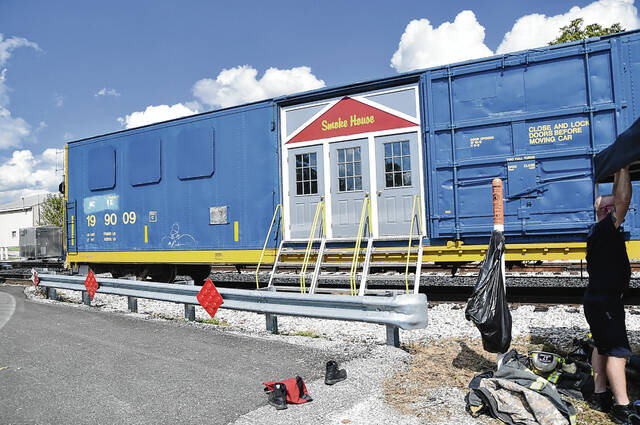
A railcar, simulating a smokehouse, was used to train firefighters on how to rescue people in a dark, close-quartered environment.
Mitchell Banks
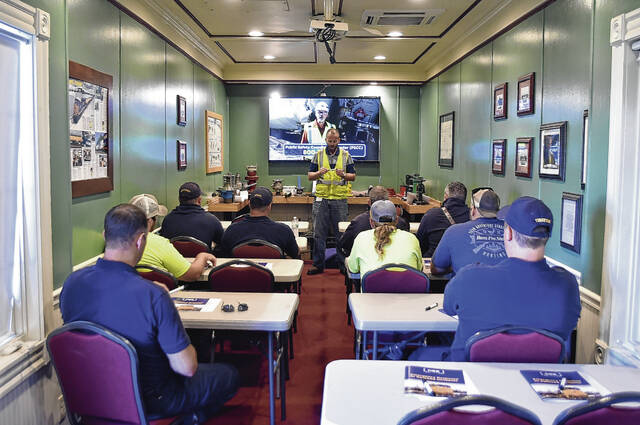
Louisville and Indiana Railroad Vice President Jeremy Kramer teaches Seymour firefighters about trains and how to respond to incidents involving rail cars and railroads.
Mitchell Banks
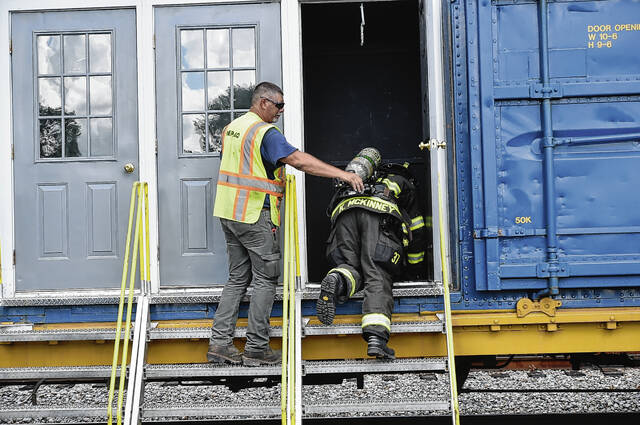
Lt. Kaleb McKinney with Seymour Fire Department crawls into a railcar to train on how to move in a dark and confined while being fully equipped.
Mitchell Banks
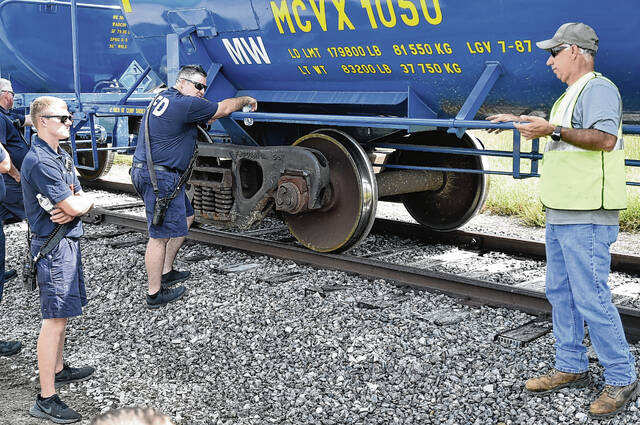
Seymour firefighters Andrew Murphy, left, and Andy Wolka, center, learn about railcars from Louisville and Indiana Railroad contractor Gary Shelton.
Mitchell Banks
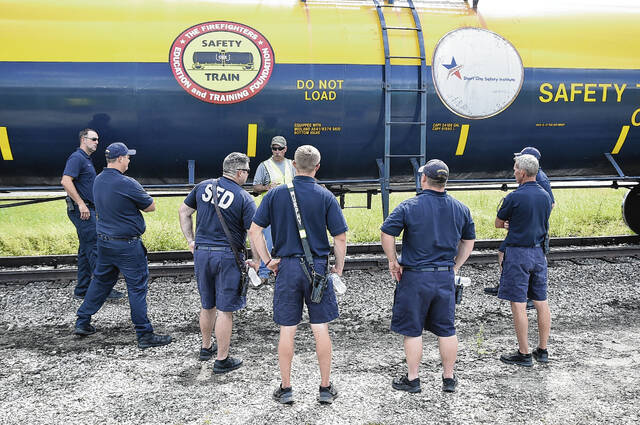
Louisville and Indiana Railroad contractor Gary Shelton talks to Seymour fighters about how to identify railcars and what they’re carrying.
Mitchell Banks

Two Seymour firefighters prepare to enter a dark area to a train to learn how to move during a fire.
Mitchell Banks
Trains are not an unfamiliar sight in Seymour, and the city’s firefighters had the chance to learn more about them this past week thanks to training presented by Louisville & Indiana Railroad and the Firefighters Education and Training Foundation.
The national foundation provided equipment for the training including a Safety Train used to instruct first responders on the features of a train, whether it’s a locomotive or the structures of railcars.
Another railcar was provided that simulated a smokehouse to give fully equipped firefighters training on how to rescue people from an active fire in a close-quarters environment with no vision.
Louisville and Indiana Railroad Vice President Jeremy Kramer helped instruct the firefighters. He said the purpose of the training is to not only teach firefighters how to respond to emergencies that happen on the railroad, but to build relationships with fire departments so they can know with whom they’re working if there is an incident.
“The No. 1 benefit is the relationship building so they know who we are when we come out to stuff,” he said.
Throughout the course, firefighters were taught about general railroad safety and potential hazards from common incidents.
Kramer said teaching firefighters more about the railroad and how trains work helps the railroad company and contractors know exactly what’s going on in a situation when passing along information.
“The other thing that no one ever thinks about that we try to take away is that (firefighters) are our first set of eyes and ears, so identifying the different components on the equipment we’re operating can give us good information so we can expedite our response with the railroad and our contractors,” he said.
Gary Shelton, a contractor for the Louisville &Indiana Railroad, talked to the firefighters and said he used to be in the fire service. He talked about how realistic the smokehouse training is.
“When you go into a house fire, you can’t see,” he said. “All it is feeling around, feeling walls. That’s exactly what they do here. They have objects they climb over and maneuver through.”
Seymour Fire Department Lt. Kaleb McKinney said the smokehouse training provides with firefighters difficult training to better prepare them for different scenarios they might come across.
“If you had all of these things happening in a house fire, you wouldn’t be in there. You would figure out a different way to do what you’re doing,” he said. “But in this controlled environment, it makes you work through multiple different scenarios all at once.”
Because Seymour Fire Department doesn’t readily have access to training for responding to railroad emergencies, McKinney said he was thankful the department could have instruction provided that they normally don’t receive.
“Having this kind of a tool is a huge benefit because this isn’t something that Seymour Fire Department in itself can afford to put together. So having this be transportable, it can be used by multiple different departments, and the same amount of money that gets spent once gets to benefit lots of people,” he said.
Seth Thompson, a Seymour firefighter, echoed McKinney’s thought that the department benefits from the railroad training since it’s an unfamiliar area of instruction.
“We don’t get a whole lot of this (kind of training), so any time we get to do something we don’t do a lot of, it’s pretty valuable,” he said.
Thompson said he learned more about train cars, how to identify them, the different components of a locomotive and how to get people out in a medical emergency.
Some employees from the Seymour Department of Public Works also participated in the training to better learn how to use their equipment when it comes to safety issues involving trains and railroads.
DPW employee Joseph Fagan said the training was awesome and recommended it for other city employees.
“I think everybody needs it at the department of public works and the sewer plant,” he said.
Reid Wieneke, another Seymour firefighter, said he enjoyed the training because he was able to learn more about the trains that frequently pass through the city.
“It’s interesting to see with as many trains that come through town what exactly is being hauled on them and what to do if something does happen,” he said.
